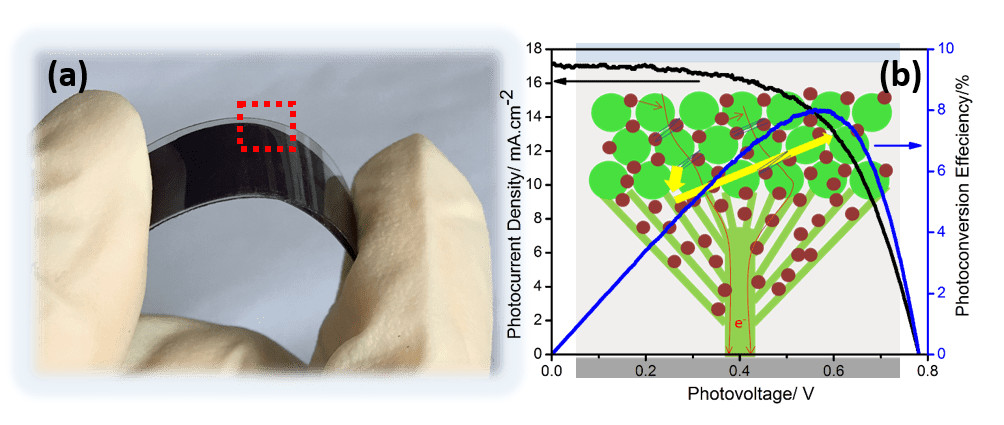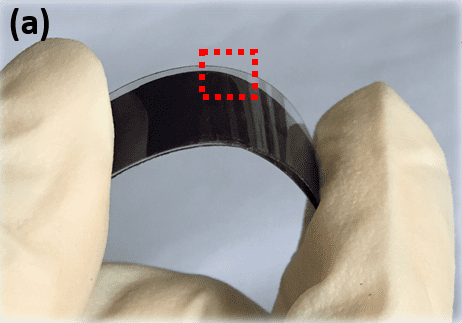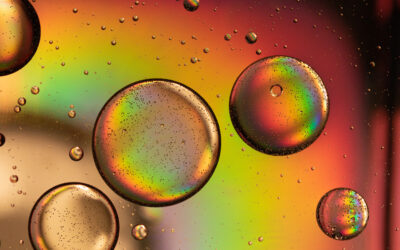 Dye-sensitized solar cells (DSSCs) are a promising candidate to replace traditional silicon-based solar cells in the near future, and have attracted extensive academic and industrial interest due to their ease of fabrication, low-cost production, light weight and high efficiency. Recently, flexible DSSCs in particular have shown great potential for portable equipment, such as laptop computers, outdoor electronic devices, and watches. One possible flexible substrate is metal foil, which has a high temperature tolerance and superior electrical conductivity, making it an excellent alternative for flexible DSSCs. However, the efficiency improvement in cells using such flexible substrates and traditional nanoparticles has been restricted by the high charge recombination loss from unexpected electron trapping and scattering at the grain boundary. Unfortunately, there can also be challenges with poor adhesion and low electrical contact between the nanoparticle layer and flexible metal foil when a simple coating process is used.
Dye-sensitized solar cells (DSSCs) are a promising candidate to replace traditional silicon-based solar cells in the near future, and have attracted extensive academic and industrial interest due to their ease of fabrication, low-cost production, light weight and high efficiency. Recently, flexible DSSCs in particular have shown great potential for portable equipment, such as laptop computers, outdoor electronic devices, and watches. One possible flexible substrate is metal foil, which has a high temperature tolerance and superior electrical conductivity, making it an excellent alternative for flexible DSSCs. However, the efficiency improvement in cells using such flexible substrates and traditional nanoparticles has been restricted by the high charge recombination loss from unexpected electron trapping and scattering at the grain boundary. Unfortunately, there can also be challenges with poor adhesion and low electrical contact between the nanoparticle layer and flexible metal foil when a simple coating process is used.
In a recent study published in ChemNanoMat, a collaborative research team consisting Zhen Li’s group at Faculty of Materials Science and Chemistry, China University of Geosciences and Yanli Zhao’s group at Division of Chemistry and Biological Chemistry, Nanyang Technological University have successfully fabricated a trilayered photoanode containing 1D TiO2 nanotube arrays (bottom layer), 3D microsized leaves (intermediate layer) and 0D TiO2 nanoparticles (top layer) on Ti foil for efficient flexible DSSCs. The authors have demonstrated that the novel bionic buxus-like bilayer presents superior light scattering and effective electron collection as compared with conventional nanotube arrays. The DSSCs based on the trilayered photoanode show a stable and markedly enhanced power conversion efficiency of 8.02 %, much higher than nanoparticle/nanotube array-based configuration (6.30 %). This trilayered TiO2 photoanode with complementary and synergistic effects shows promise for use in flexible DSSCs.
Text kindly provided by the authors of the original manuscript.

















